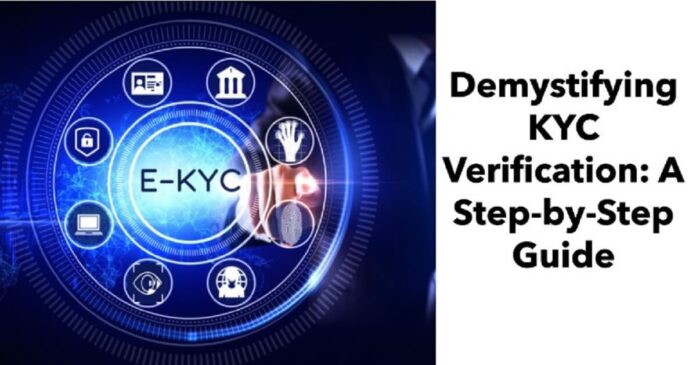In a world where technology is constantly changing, cybersecurity threats are on a constant rise. As a business owner, authenticating your customers, partners, and clients is the best way to be on top of any security issues. That way, you can mitigate the risks of dealing with fraudulent people and succeed in any business interaction you have.
So, you must be wondering what the best way is to authenticate people you are interacting with within the business. The secret is using an elaborate KYC framework.
Here is a step-by-step guide to demystifying KYC verification for businesses.

Understanding KYC Verification
KYC verification revolves around a series of processes that help companies verify the identity of their customers. But that does not mean you can only use KYC for customer verification. You can also use it to confirm the identities of your partners and prospective employees to minimize the risk of fraud and the disadvantages of working with shady people.
The Process Of KYC Verification
Now that you know what KYC entails, let’s have a step-by-step discussion on performing KYC for your business.
1. Collection of Customer Information
KYC verification starts by collecting information of customers or the individual you want to run the search on. You need to collect relevant information that can prove the person’s identity.
Most companies that perform KYC collect data such as the customers’ names, identities, and addresses before running a search. You can also collect photographs and fingerprints depending on how intense you want the search to be.
Additional information, such as tax information and whether the individual has a government-issued ID, can also come in handy.
The main thing you should remember when collecting private information is to obtain the consent of the individual you want to run a search on.
2. Document Verification
Once you receive the documents, you should verify their authenticity. Document verification is very important as it allows you to be sure that the documents you are basing your search on are genuine. A KYC verification would be of no use if you perform the checks on fraudulent documents.
One of the best ways to confirm whether a document is authentic is by checking it for watermarks that are given by the legitimate authority issuing the document. It can also be a good idea to run the document on authoritative government databases.
3. Identity Verification
If you are confident that the document is genuine, you can now check the customer’s identity by confirming their background. A background check on genuine documents is bound to reveal much information. You are likely to get insight into the criminal history of the subject of the search, their financial history, and generally, whether you can trust them.
The process of identity verification goes hand in hand with risk assessment. The information you get from your background checks during the identity verification process can help you gauge whether it would be a good idea to be involved with the customer or client you are performing a check on.
4. Customer Communication
You should always communicate the outcome of the KYC process to the customer. Whether or not you decide to work with the test subject is important. Customers need to know what those results are and how they affect your present and future relationship with them.
5. Record Keeping
After performing a KYC verification process, it is vital for you to keep good records of the search for both your internal processes and compliance with government regulations. However, you should know that the results of such scans are normally a customer’s private information. You should not keep the information within your organization for longer than necessary.

In some jurisdictions, you should also provide the customer an opportunity to request that their information be deleted. The only way you can keep information that the customer has requested to be deleted is if there are laws in your area saying that you should keep that information for a specific time frame.
6. Reporting And Compliance
If at all you come across some incriminating information during the KYC verification process, it is vital for you to report such information to the authorities as soon as possible. This is important in situations where the results of the KYC verification indicate that the individual might be complicit in money laundering or terrorism financing.
7. Ongoing Monitoring
KYC verification is not a once-in-a-while process. You need to perform continuous monitoring of the individual just to be safe. Ongoing monitoring can feel like a significant burden, especially when you are already sure who you are dealing with.
But you should know that people change. It is better to be safe than to be sorry. The money you spend on continuous monitoring can save you a great deal in the future.
Bottom Line
KYC verification is a crucial process in keeping your business secure. It helps you know who you are dealing with and assists you in making informed decisions on risk management. Now that you know everything about KYC verification and the steps to follow, you should start working on the best ways to perform KYC in your institution. What are you waiting for? Start with KYC verification today.



































